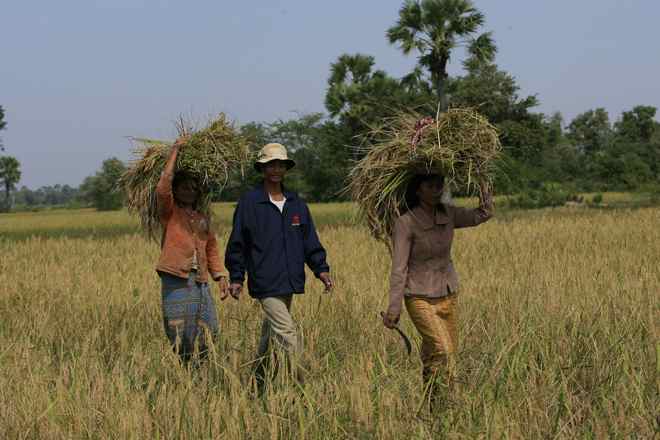The United Nations declared 2014 the International Year of Family Farming (IYFF) to highlight the importance of family and smallholder farmers. Food Tank is partnering with the U.N. Food and Agriculture Organization (FAO) to commemorate IYFF, and will feature weekly posts and other media highlighting the innovations that family farmers are using to alleviate hunger, poverty, and environmental degradation along with the campaigns and policies that support them.
The System of Rice Intensification, popularly known as SRI, is an environmentally sustainable farming method that has helped smallholder farmers across the globe increase their yields. SRI was originated in Madagascar as a way to increase the productivity of rice paddies while simultaneously decreasing expenditure on inputs, benefiting Malagasy smallholder farmers who have few economic resources. In direct response to local slash-and-burn agricultural practices, the methodology expanded its goals to include the reduction of land-clearing for farming. The program has since become one of the leading agricultural development methodologies in the world, operating in at least 50 countries and reaching an estimated 5 million smallholder farmers, according to Norman Uphoff, Acting Director of the Cornell Institute of Public Affairs.
SRI yields are attributed to the ways that farmers manage their crop. The potential for growth of each individual plant is maximized through provision of necessary amounts of space, air, water and nutrients. The SRI method functions by individually planting rice seedlings at a younger age than standard planting practices require, and separating the seedlings by wider-than-normal intervals. As Uphoff explains, by planting the seedlings at a younger age, they are able to form stronger roots that better endure drought, intense rain, or other adverse weather conditions. The increased distance between the plants allows for them to absorb more sunlight, encouraging leaf growth. Land farmed according to the System of Rice Intensification method also benefits from precise and sparing irrigation usage, and healthy soil through aeration practices and organic matter enrichment. In this way, the SRI method ultimately conserves valuable resources, and preserves the condition of the land.
The results of these practices are substantial: according to a presentation given by Uphoff at the World Bank in 2012, paddy yields increase by 50-100 percent on average, and sometimes by much more. Costs decline as seed usage goes down by 80-90 percent, and irrigation usage declines by 25-50 percent on average. The methodology is now being broadened to apply to other crops. With the System of Crop Intensification (SCI), similar positive yield results have been seen in mustard, sugarcane, millet, maize, and legume and vegetable crops.
SRI’s observed success could be a significant indication for the future of agricultural innovations. Because this method requires no fancy technology or infrastructure, it has no added cost to farmers. Planting the younger seedlings individually is more labor-intensive than standard crop-farming practices; however, as Uphoff observed, once farmers develop the more advanced planting skills required, SRI becomes more labor-saving than traditional methods.
In his evaluation of the success of SRI methods for smallholder farmers, Jonathan Latham, Co-founder and Executive Director of the Bioscience Resource Project says, “Agriculture in the 21st century must be practiced differently from the previous century… more than ever, [farmers] need cropping practices that are more ‘climate-proof.’” Altered to encompass the needs of each crop, SRI is a promising example of the success of a more conscious, plant-centered form of farming that has addressed three different tenets of a sustainable farming model: increased production, decreased damage to the environment, and increased profits, improving farming’s impact on the land as well as the lives of family farmers.












